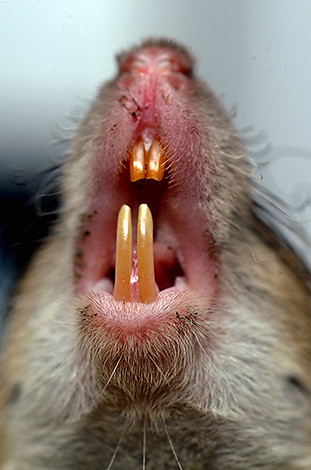
Here are just some curious facts:
- In Moscow, more than 600 rat bites are officially registered every year;
- In the US alone, more than 14,000 people bite rats annually;
- The number of rat attacks on humans worldwide reaches 3.5 million per year;
- Diseases transmitted by rat bites take the lives of more than 2,000 people every year.
At a minimum, this means that rats attack people quite often - much more often than an ordinary urban inhabitant might think, familiar with rats only by hearsay. On the Internet you can even find videos with such attacks, although in general videos with real, dangerous attacks are extremely rare.
As for the cases when these animals bitten a man to death - in such documentary evidence we are talking about people who could not move or were unconscious. Yes, a rat can attack a person, it can even do it on its own initiative, and not just within the framework of self-defense, but such an attack is always limited only to individual bites, even serious and fraught with infection.
In the photo - a rat bite:
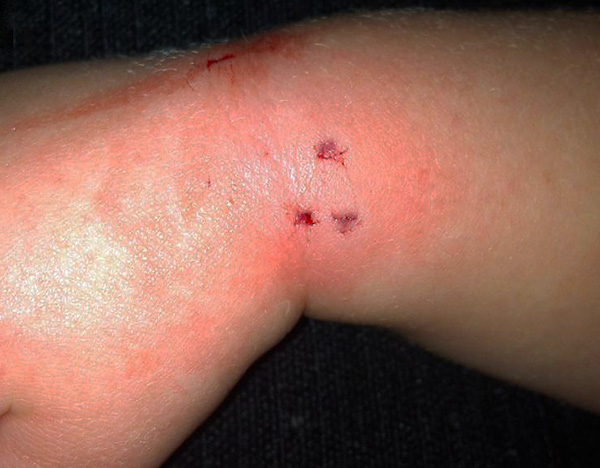
Agree, it is difficult to imagine that a small animal (or even several animals) of a relatively small size could kill a person who is conscious and able to move.
Nevertheless, fans of tickling nerves are actively spreading rumors about giant mutant rats from the metro that can kill a person, as well as stories about the invasion of cannibalistic rats and the corpses of people supposedly found in the sewers. In these myths, the danger of rats is too exaggerated, but this exaggeration is not always obvious to the person who is told such a story. Many people readily believe in stories and cannot tell the truth from fiction.
So what can actually end a rat attack on humans? And why, in general, do these animals attack? Are they only trying to protect themselves and their home, or do they really consider a person as a victim? Are there, after all, true cannibalistic rats capable of massively attacking a person and killing him?
Let's figure it out ...
Why and when do rats attack humans?
Almost all cases of rat attacks on humans occur for two reasons:
- The rat attacks, protecting itself or its offspring. Usually this happens when they try to take the animal out of the trap, ruin its nest, or try to catch or kill it at a direct meeting in the room (often cornering it);
- Much less often, the animal tries to bite off a piece of skin or even meat (in a child or in general in a sedentary person) in order to satisfy hunger.
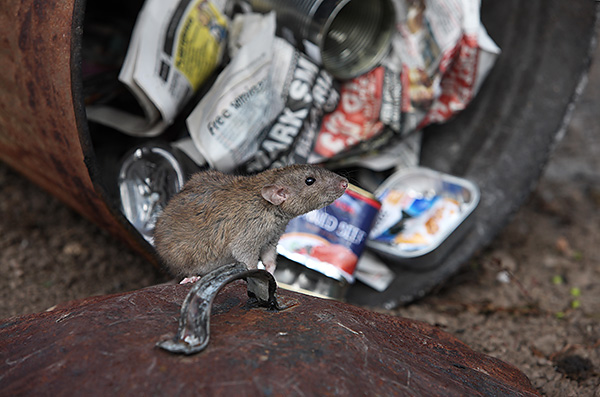
In Russia, rats rarely consider humans as food, as they may well find enough food in safer ways. And they have to attack a person only when he poses a threat to their life (or it seems to them that such a threat comes from a person).
On a note
According to some reports, rats bite annually 1.2 people out of 100 thousand, that is, around the world every year there are approximately 90-95 thousand attacks of rats on humans. Other statistics claim that only 1 out of 36 people reports such bites, that is, in reality, the number of rat attacks on humans can reach up to 3.5 million a year around the world.
In third world countries, in slums and impoverished areas where there are a lot of rats, amid a general lack of food sources, these animals often gnaw at the heels of sleeping people and even try to bite for the soft tissues of their bodies. On the other hand, here many poor people catch rats for food, and with such a hunt, bites by animals are inevitable.

But here you can’t talk about rats that want to kill or tear to pieces a person - they are just rodents that bite stealthily (evaluating a person as food), or as part of self-defense.
From what purpose the rat attacks, usually depends on how exactly such an attack will end.
How do rats attack?
The vast majority of rat attacks occur to one degree or another unexpectedly for humans. Typically, these animals attack humans in one of two ways.
More often, rats rush at people from a distance, making a jump and trying not so much to bite as to scare a person (they often squeak, almost squeal). Such an attack usually occurs when the animal is scared, cornered and forced to defend itself. An example of such an attack is shown in the video:
In more rare cases, a rodent climbs onto a sleeping person and bites it over an open area of the body. The following video shows an example of such an attack:
As a rule, attacks of the first type are most dangerous. With them, the rat purposefully seeks to cause the greatest damage to the offender, bites hard and more than once. And if a person is confused (for example, a child), then he can be quite bitten.
By the way, rat bites by sleeping people are often not felt: for example, rats gnaw at the heels of people very carefully, without causing pain. As a rule, a person does not even wake up with such an attack.

It should be borne in mind that when a rat openly rushes at a person, it primarily seeks to scare him in order to be able to escape. And if the situation is not in your favor, then it is best to let her do it than to try and continue to catch her, getting new bites.
On a note
There is no documented evidence that rats alone or in packs can chase a fleeing person for a long time or attack him from shelter. It is difficult to imagine a cannibal rat weighing about 300 grams, which would try to chase and bite a 60-kilogram man.
The dangers of rat attacks
However, for whatever reason rat attacks on humans occur, the main dangers of these attacks are always the same: when a animal bites, there is a high risk of infection with serious diseases, primarily soda and tetanus.
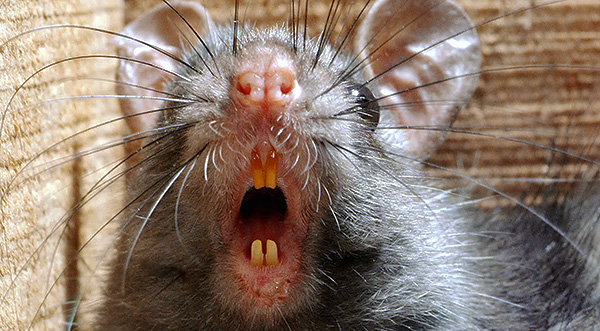
Sodoku is relatively easy to treat, but without therapy it is deadly (its mortality in untreated form is 10%). The disease is accompanied by severe muscle pain, fever, anemia and exhaustion.
The dangers of tetanus are well known: among its consequences are known paralysis, nervous disorders, pneumonia, and in severe cases - death. Even with the use of modern drugs, the mortality rate of the disease is 17-25%, and in remote areas from it 9 people die from 10 patients.
On a note
Other diseases, for example, various fevers, leptospirosis and typhoid, can not be transmitted even with bites, but simply by contact with wild rats or their corpses. Say, if you throw a rat out of a trap, then it is quite possible to get infected. And the same typhus or plague is completely carried by rat fleas - for infection it is not necessary to contact the animal at all.
In tropical regions, with a rat attack, there is a high risk of contracting various fevers - Lassa, Argentinean, Venezuelan. Lassa fever, for example, causes more than 5,000 deaths annually, with a mortality rate of 30%.
The photo below shows a rat bite:
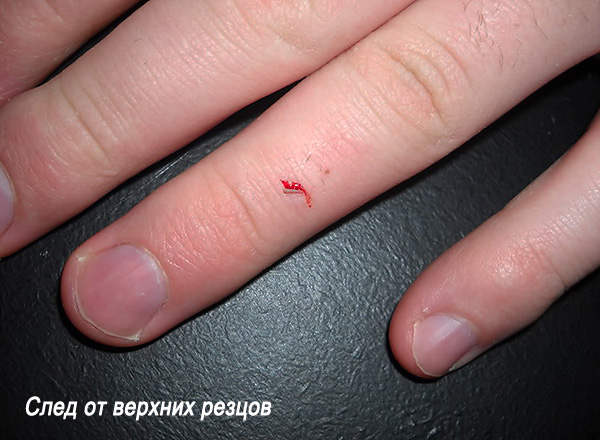

If, during a bite, a tetanus pathogen has come under the skin, then the development of the disease is likely.
Meanwhile, rat rabies are not tolerated, and infection with sodoku or tetanus during rodent attacks is relatively rare. In general, the probability of infection with any disease with a rat bite is about 2% - this is a sufficient reason to avoid such an attack, and after it - to see a doctor.
Another danger of rat bites is, in fact, injuries.According to statistics, after the attacks of these animals, the victims remain:
- Damage to the soft tissues characteristic of rodent bites - in 61% of cases;
- Torn wounds - in 14% of cases;
- Abrasions - in 12% of cases;
- Bruising without damage to the skin - in 6% of cases;
- Hematomas - 5% of the consequences of bites;
- Fractures of the fingers - 2%.
Often, during one attack of the animal, a person receives several different injuries at once.
Statistics were collected based on an analysis of about 500 rat attacks on humans. At a minimum, it shows that these animals are strong enough and can leave serious wounds on the human body.
The photo below shows the girl attacked by the rat:
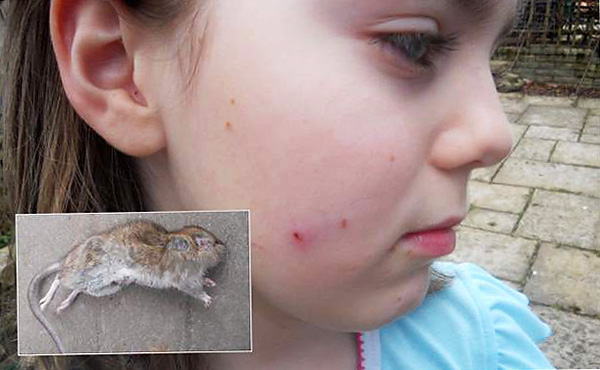
It is interesting
Using measuring equipment, scientists checked the strength of a bite of an ordinary gray rat: the animal can create a pressure of 500 kg / cm with its incisors2. This allows him to gnaw through metal wires and crack down on the bones of dead animals, nuts and seeds. Be sure: to bite your finger to the bone, the rat does not even have to exert much strain ...
All these injuries may not seem so significant compared with those that a person receives when a rat intentionally tries to bite off a piece of flesh from him. In particular, cases have been documented where a rat has bitten off a child’s nose or earlobe, and many drunken animals have even bitten off the phalanges of their fingers. In addition, stories are described when rats bit a man who was unable to move and defend himself.
Quote
“A school teacher in the Italian town of Bari just put her three-year-old daughter Simone to bed and went into the next room when she heard a loud piercing scream from the nursery. Running into the room and turning on the light, she saw a slopty rat scuttling through the room with a piece of the child’s ear. A screaming girl sat on the bed and held onto her head with a bloodshot hand ... "
Angelo Maria Perrino, Panorama, Milan, 1979
What is known today about cannibalistic rats?
As already noted above, there are quite well-known and frequent cases when rats gnaw at the person hardened skin on the heels. Usually this happens when the victim is sleeping, and often the attack ends in serious trouble - the animals get to the soft tissues, and the wounds here do not heal for a very long time due to constant anxiety when walking.
When the rats understand that a person cannot harm them, they calmly bite off more and more pieces from his body. It was rats who killed in the Middle Ages a huge number of prisoners and prisoners in military camps: people were tied up, their ability to move was severely limited, and hungry rodents boldly (and knowingly) nibbled them, leaving bleeding wounds. A person usually died either from blood loss or from blood poisoning.
If a person is paralyzed or unconscious, he may suffer the same fate.
Quote
“This incident occurred in Naples. 77-year-old Vittoria Chipula for several days did not appear in public, did not answer the phone, and one of his friends decided to visit her. In the house he saw a terrible picture: a woman was lying on the bed, and her body was completely nibbled by rats. It is not known whether a woman died before the attack of rodents, or they bit her during her lifetime ... "
Angelo Maria Perrino, Panorama, Milan, 1979
There is information about the terrible torture inflicted on guilty prisoners in Stalin's labor camps: they tied his hands and feet to a man, and then put him in a large barrel where hungry rats were sent to. A few days later, corpses with eaten stomachs were taken out of the barrels. There were other options for torture ...

Nevertheless, one cannot speak of specialized cannibalistic rats. These animals are omnivorous and eat any kind of meat: a rat eats entrails whenever possible and gnaws bones, and if it finds a corpse of any animal or person, it will gnaw off pieces from it as well.The difference between the corpse and a person who is unconscious, the animal may not notice.
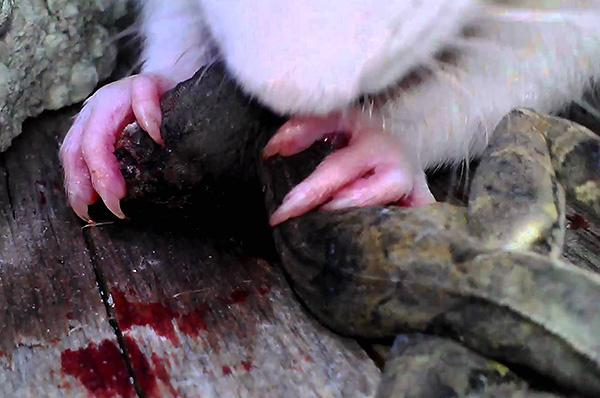
That is, by and large, real cannibalistic rats are the most ordinary rats, eating everything in a row, but by chance they simply appeared next to the immobile body of a person and did not disdain to feast on them.
But rats that would feed exclusively on human flesh are not known to science today. Moreover, there are no facts that these animals can attack healthy people and bite them to death. Even the invasion of rats in certain places never leads to the appearance of human victims. For example, rats are reported from various Russian cities with varying frequency, but no tragic events follow these events.
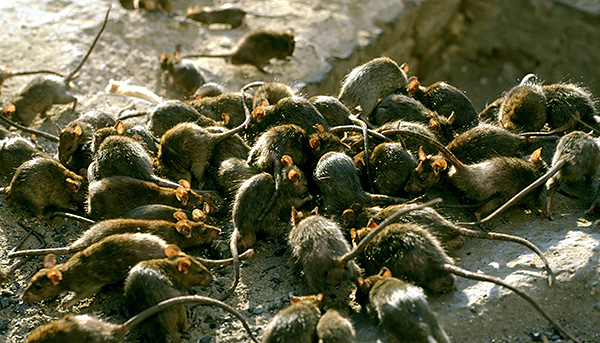
On a note
The largest rats on the planet are completely safe for humans. These are African marsupial rats and Bosavi woolly rats, reaching a length of more than half a meter and weighing several kilograms. They never attack people. The former are specially trained and used in military units to search for mines, the latter are very rare, and when meeting a person in nature they do not pay attention to him and do not show any aggression.
Ironically, the most aggressive rats are just small basement animals, accustomed to the fact that the basement is their territory.
Do rats attack pets?
But for pets, rats are much more dangerous than for humans. At least, because they boldly attack birds and mammals of a comparable size, be it a mouse, a hamster, a duckling or even an adult pigeon, and they always expect to kill and gobble up prey in such attacks.
Moreover, in the pursuit of a prey, rats can demonstrate amazing strength and dexterity. So, for example, they can catch ducklings in the water, climb along the walls into bird nests, fearlessly bite large birds by the paws.
And when confronted with a cat, a rodent often boldly attacks it, hoping to dare to stun the enemy with a daring attack, gain time and hide. The video below shows how a rat attacks a cat:
On a note
The famous zoo owner Karl Hagenbeck rats killed three elephants in one night. They nibbled the feet of their feet very gigantic animals, and the elephants began to become infected with blood.
In countries where rat invasions occur at varying frequencies, these animals can completely destroy small farms.
In the wild, rats are also very aggressive. They attack albatross chicks in nests, ruin mouse nests, eat tadpoles, small frogs and lizards.

The video below shows a unique case in which an adult rat boldly attacks a snake, saving his cub:
Do home rats bite?
Of course, a domesticated rat can also bite a person. If you tease her, try to take away food, wake him up abruptly, or suddenly pick up her cub, then it is likely that the animal will grab its finger. Such attacks are carried out without any “malicious intent” - the animal is simply trying to inform the person in an accessible way that he does not like something.
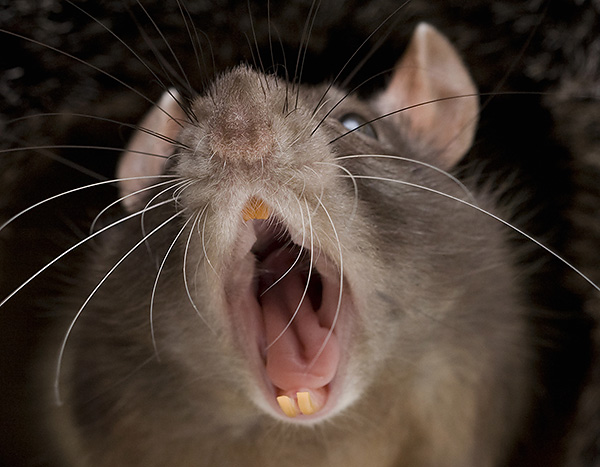
If the rat is tame, then it certainly will not try to bite off its owner’s nose or nibble on his heels.
On a note
Therefore, by the way, the stories about Afghan cannibalistic rats, which were supposedly brought to Russia under the guise of decorative dachshunds, were kept as pets, but who, they say, could at any moment recall their aggressive rat nature and attack the owners, causing serious skepticism.
So, a short summary: rat attacks on humans are indeed quite possible and, moreover, happen quite often. In most cases, rodents rush at people for self-defense, but sometimes they can consider a sedentary victim as a potential source of meat.However, there are no real cannibalistic rats in the world: there are no huge mutant rats that can tear humans to pieces alone, and there are no rodents that attack people in large groups and specialize in feeding on human flesh.
So, you should not be afraid that somewhere rats will attack you, who want to bite or, even less so, gobble up. If you yourself do not climb on the rampage, do not stay overnight in dubious places and do not try to kill the fleeing rat, the attack of the animal does not threaten you at all.
An example of a rat biting children while sleeping
Cat fight with rat

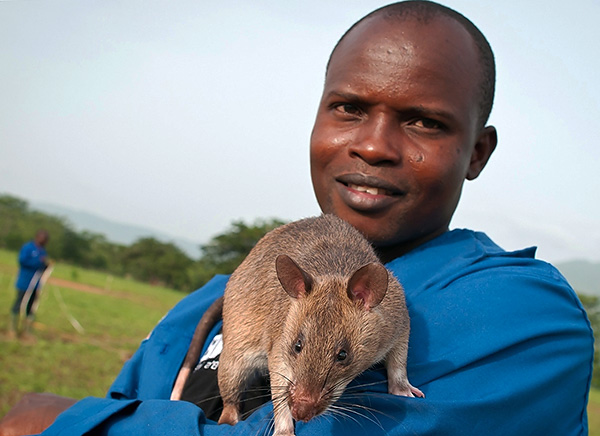
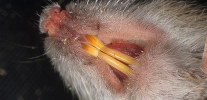
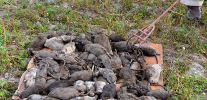
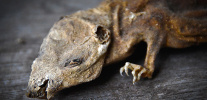
My rat ate a neighbor.
How did you eat?
Yeah, what about the rest in your freezer? 🙂
Hmm ... Actually, the punishment technique using rats was developed by the leader of the Dutch revolution of the 16th century, Didrik Sonoy. They did it very simply: a man was stripped to a goal, and then tied to a table. A cage with a hungry rat was placed on the stomach. This cage did not have a bottom, that is, the rat simply ran through its stomach. In the upper part of the cage there was a place where hot coals were put - it was necessary to activate the rat (so that it tried to escape). Fleeing from the heat of coals, the rat gnawed a hole right in the human stomach to get out.
In-in? I mean the same thing, otherwise Stalin is to blame everywhere.
Yes, a rat bit me today in St. Petersburg. Hmm, as long as I live, I never knew that a rat can climb up a leg and bite.
Rats are mean creatures that need to be destroyed, but mice do not pose a direct danger to humans. It would be better if experiments were carried out on rats and fed them to snakes.
And at our place a rat ran under the floor. The house is old, private. Today, holes were closed with a broken glass volm. I am very, very afraid of rats.
There are a lot of rats in Berlin. They run all over the street.
Horror, I'm scared!
Due to the characteristics of the working specialty, I came across it with wild gray rats quite often. I can say from my observations that rats are very curious animals and are extremely aggressive towards humans in extremely rare cases. The most common cause of aggression is the rat's fright or being at a dangerously close distance from the location of the rat offspring. In all other cases, rats try to avoid contact with humans. There were times when young rats watched my work with curiosity, approached an arm's length, but did not show aggression, but simply looked at what I was doing. I agree that wild rats are not the most pleasant company, but I can not disagree with the fact that there are many others - animals that are much whiter than humans (for example, feral dogs, especially in packs). In addition to curiosity, a developed intellect is noticeable in the behavior of rats, but its presence, in my opinion, is a plus, not a minus, for humans.
I haven’t read such terry nonsense for a long time. And the layman will believe. I am ashamed to be so “yellow” press.